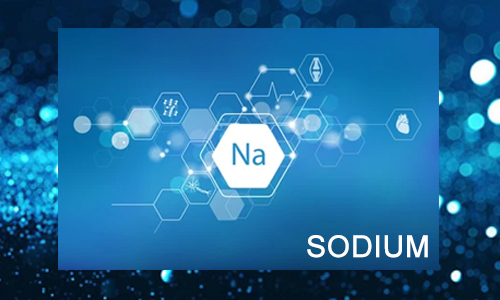
Please consult with your health-care provider before making any dietary changes based on any of the information provided here.
If you live in Quebec and do not have a family doctor, you can [ sign up here ].
Anatomy and Physiology
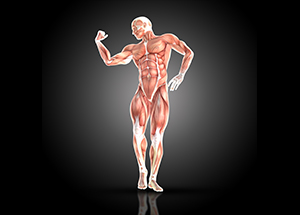
Anatomy and Physiology is a dynamic textbook for the two-semester human anatomy and physiology course for life science and allied health majors. The book is organized by body system and covers standard scope and sequence requirements.
More InfoHuman Nutrition

This textbook serves as an introduction to nutrition. The book covers basic concepts in human nutrition, key information about essential nutrients, basic nutritional assessment, and nutrition across the lifespan.
More InfoPrinciples of Nutrition
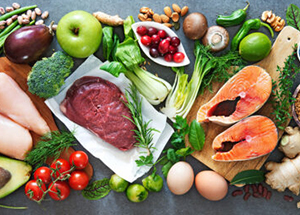
A great textbook to get started on a journey into the world of health and nutrition. The first focus will be to demonstrate that nutritional science is an evolving field of study, continually being updated and supported by research, studies, and trials.
More InfoMicrobiology
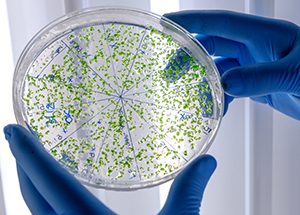
Microbiology covers the scope and sequence requirements for a single-semester microbiology course for non-majors. The book presents the core concepts of microbiology with a focus on applications for careers in allied health. The pedagogical features of the text make the material interesting and accessible while maintaining the career-application focus and scientific rigor inherent in the subject matter.
More InfoChemistry

Chemistry 2e is designed to meet the scope and sequence requirements of the two-semester general chemistry course. The textbook provides an important opportunity for students to learn the core concepts of chemistry and understand how those concepts apply to their lives and the world around them. The book also includes a number of innovative features, including interactive exercises and real-world applications.
More InfoBiology

Biology 2e is designed to cover the scope and sequence requirements of a typical two-semester biology course for science majors. The text provides comprehensive coverage of foundational research and core biology concepts through an evolutionary lens. Biology includes rich features that engage students in scientific inquiry, highlight careers in the biological sciences, and offer everyday applications.
More InfoSodium – Electrolyte
The vast majority of individuals in North America
need to reduce sodium intake.
Sodium and Nutrient Transport
Sodium is essential for nutrient absorption in the small intestine and also for nutrient reabsorption in the kidney. Amino acids, glucose and water must make their way from the small intestine to the blood. To do so, they pass through intestinal cells on their way to the blood. The transport of nutrients through intestinal cells is facilitated by the sodium-potassium pump, which by moving sodium out of the cell, creates a higher sodium concentration outside of the cell (requiring ATP).
Sodium and Fluid Balance
Sodium is vital not only for maintaining fluid balance but also for many other essential functions. In contrast to many minerals, sodium absorption in the small intestine is extremely efficient and in a healthy individual all excess sodium is excreted by the kidneys. In fact, very little sodium is required in the diet (about 200 milligrams) because the kidneys actively reabsorb sodium. Kidney reabsorption of sodium is hormonally controlled, allowing for a relatively constant sodium concentration in the blood.
Water and carbon are the foundations of all life. The surface of the earth is 70 percent water; the volume of water in humans is about 60 percent.Water is called the “universal solvent” because more substances dissolve in it than any other fluid. Molecules dissolve.
Electric Forces in Biology
Classical electrostatics has an important role to play in modern molecular biology. Large molecules such as proteins, nucleic acids, and so on—so important to life—are usually electrically charged. DNA itself is highly charged; it is the electrostatic force that not only holds the molecule together but gives the molecule structure and strength.

Electrolyte and Ion Reference Values
| Name | Chemical symbol | Plasma | Urine |
| Sodium | Na+ | 136.00-146.00 (mM) | 40.00-220.00 (mM) |
Sodium and The Nervous System
The second notable function of sodium is in nerve impulse transmission.
Nerve impulse transmission results from the transport of sodium cations into a nerve cell, which creates a charge difference (or voltage) between the nerve cell and its extracellular environment.
Similar to how a current moves along a wire, a sodium current moves along a nerve cell.
Stimulating a muscle contraction also involves the movement of sodium ions as well as other ion movements
The nervous system of the common laboratory fly, Drosophila melanogaster, contains around 100,000 neurons, the same number as a lobster. This number compares to 75 million in the mouse and 300 million in the octopus. A human brain contains around 86 billion neurons. Despite these very different numbers, the nervous systems of these animals control many of the same behaviors—from basic reflexes to more complicated behaviors like finding food and courting mates. The ability of neurons to communicate with each other as well as with other types of cells underlies all of these behaviors
Most neurons share the same cellular components. But neurons are also highly specialized—different types of neurons have different sizes and shapes that relate to their functional roles.
Like other cells, each neuron has a cell body (or soma) that contains a nucleus, smooth and rough endoplasmic reticulum, Golgi apparatus, mitochondria, and other cellular components. Neurons also contain unique structures for receiving and sending the electrical signals that make communication between neurons possible. Dendrites are tree-like structures that extend away from the cell body to receive messages from other neurons at specialized junctions called synapses.
Although some neurons do not have any dendrites, most have one or many dendrites. The bilayer lipid membrane that surrounds a neuron is impermeable to ions. To enter or exit the neuron, ions must pass through ion channels that span the membrane. Some ion channels need to be activated to open and allow ions to pass into or out of the cell. These ion channels are sensitive to the environment and can change their shape accordingly. Ion channels that change their structure in response to voltage changes are called voltage-gated ion channels. The difference in total charge between the inside and outside of the cell is called the membrane potential.
A neuron at rest is negatively charged: the inside of a cell is approximately 70 millivolts more negative than the outside (–70 mV). This voltage is called the resting membrane potential; it is caused by differences in the concentrations of ions inside and outside the cell and the selective permeability created by ion channels. Sodium-potassium pumps in the membrane produce the different ion concentrations inside and outside of the cell by bringing in two K+ ions and removing three Na+ ions. The actions of this pump are costly: one molecule of ATP is used up for each turn.
Up to 50 percent of a neuron’s ATP is used in maintaining its membrane resting potential. Potassium ions (K+), which are higher inside the cell, move fairly freely out of the neuron through potassium channels; this loss of positive charge produces a net negative charge inside the cell.Sodium ions (Na+), which are low inside, have a driving force to enter but move less freely. Their channels are voltage dependent and will open when a slight change in the membrane potential triggers them.
A neuron can receive input from other neurons and, if this input is strong enough, send the signal to downstream neurons.Transmission of a signal between neurons is generally carried by a chemical, called a neurotransmitter, which diffuses from the axon of one neuron to the dendrite of a second neuron. When neurotransmitter molecules bind to receptors located on a neuron’s dendrites, the neurotransmitter opens ion channels in the dendrite’s plasma membrane.
This opening allows sodium ions to enter the neuron and results in depolarization of the membrane—a decrease in the voltage across the neuron membrane. Once a signal is received by the dendrite, it then travels passively to the cell body.A large enough signal from neurotransmitters will reach the axon. If it is strong enough (that is, if the threshold of excitation, a depolarization to around –60mV is reached), then depolarization creates a positive feedback loop: as more Na+ ions enter the cell, the axon becomes further depolarized, opening even more sodium channels at further distances from the cell body.
This will cause voltage dependent Na+ channels further down the axon to open and more positive ions to enter the cell. In the axon, this “signal” will become a self-propagating brief reversal of the resting membrane potential called an action potential.At the resting potential, the K+ channels close and Na+ channels reset. The depolarization of the membrane proceeds in a wave down the length of the axon.
It travels in only one direction because the sodium channels have been inactivated and unavailable until the membrane potential is near the resting potential again; at this point they are reset to closed and can be opened again.. Leurs canaux dépendent du voltage et s’ouvrent lorsqu’une légère variation du potentiel de la membrane les déclenche.
The Nervous System
As you read this, your nervous system is performing several functions simultaneously. The visual system is processing what is seen on the page; the motor system controls your eye movements and the turn of the pages (or click of the mouse); the prefrontal cortex maintains attention. Even fundamental functions, like breathing and regulation of body temperature, are controlled by the nervous system. The nervous system is one of two systems that exert control over all the organ systems of the body; the other is the endocrine system. The nervous system’s control is much more specific and rapid than the hormonal system. It communicates signals through cells and the tiny gaps between them rather than through the circulatory system as in the endocrine system. It uses a combination of chemical and electrochemical signals, rather than purely chemical signals used by the endocrine system to cover long distances quickly. The nervous system acquires information from sensory organs, processes it and then may initiate a response either through motor function, leading to movement, or in a change in the organism’s physiological state.
Compared to invertebrates, vertebrate nervous systems are more complex, centralized, and specialized. While there is great diversity among different vertebrate nervous systems, they all share a basic structure: a CNS that contains a brain and spinal cord and a PNS made up of peripheral sensory and motor nerves. One interesting difference between the nervous systems of invertebrates and vertebrates is that the nerve cords of many invertebrates are located ventrally (toward the stomach) whereas the vertebrate spinal cords are located dorsally (toward the back).
The nervous system is made up of neurons, specialized cells that can receive and transmit chemical or electrical signals, and glia, cells that provide support functions for the neurons. There is great diversity in the types of neurons and glia that are present in different parts of the nervous system
Polarity of Water Molecules
The best example of this charge screening is the water molecule, represented as. Water is a strongly polar molecule. Its 10 electrons (8 from the oxygen atom and 2 from the two hydrogen atoms) tend to remain closer to the oxygen nucleus than the hydrogen nuclei. This creates two centers of equal and opposite charges—what is called a dipole, as illustrated in Figure 18.29. The magnitude of the dipole is called the dipole moment. These two centers of charge will terminate some of the electric field lines coming from a free charge, as on a DNA molecule. This results in a reduction in the strength of the Coulomb interaction. One might say that screening makes the Coulomb force a short range force rather than long range.
Other ions of importance in biology that can reduce or screen Coulomb interactions arand and Na– K+ Cl–. These ions are located both inside and outside of living cells. The movement of these ions through cell membranes is crucial to the motion of nerve impulses through nerve axons.
Recent studies of electrostatics in biology seem to show that electric fields in cells can be extended over larger distances, in spite of screening, by “microtubules” within the cell. These microtubules are hollow tubes composed of proteins that guide the movement of chromosomes when cells divide, the motion of other organisms within the cell, and provide mechanisms for motion of some cells (as motors).
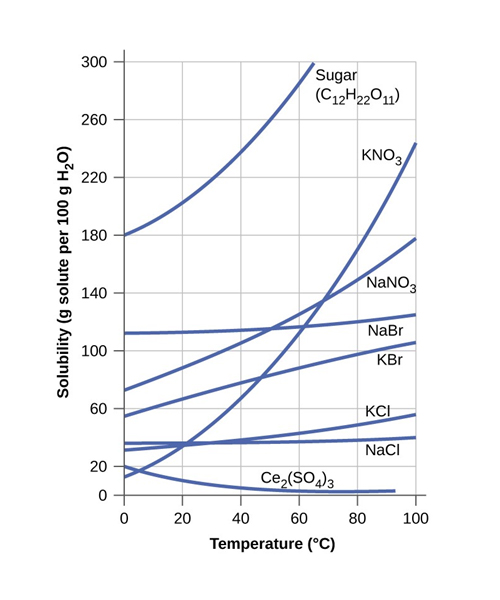
Figure : This graph shows how the solubility of several solids changes with temperature.
Sodium is reabsorbed from the renal filtrate, and potassium is excreted into the filtrate in the renal collecting tubule. The control of this exchange is governed principally by two hormones—aldosterone and angiotensin II.
Aldosterone
Recall that aldosterone increases the excretion of potassium and the reabsorption of sodium in the distal tubule. Aldosterone is released if blood levels of potassium increase, if blood levels of sodium severely decrease, or if blood pressure decreases. Its net effect is to conserve and increase water levels in the plasma by reducing the excretion of sodium, and thus water, from the kidneys. In a negative feedback loop, increased osmolality of the ECF (which follows aldosterone-stimulated sodium absorption) inhibits the release of the hormone (Figure below).

Figure : The Aldosterone Feedback Loop Aldosterone, which is released by the adrenal gland, facilitates reabsorption of Na+ and thus the reabsorption of water.
Angiotensin II
Angiotensin II causes vasoconstriction and an increase in systemic blood pressure. This action increases the glomerular filtration rate, resulting in more material filtered out of the glomerular capillaries and into Bowman’s capsule. Angiotensin II also signals an increase in the release of aldosterone from the adrenal cortex.
In the distal convoluted tubules and collecting ducts of the kidneys, aldosterone stimulates the synthesis and activation of the sodium-potassium pump (Figure 26.14). Sodium passes from the filtrate, into and through the cells of the tubules and ducts, into the ECF and then into capillaries.
Water follows the sodium due to osmosis. Thus, aldosterone causes an increase in blood sodium levels and blood volume. Aldosterone’s effect on potassium is the reverse of that of sodium; under its influence, excess potassium is pumped into the renal filtrate for excretion from the body.
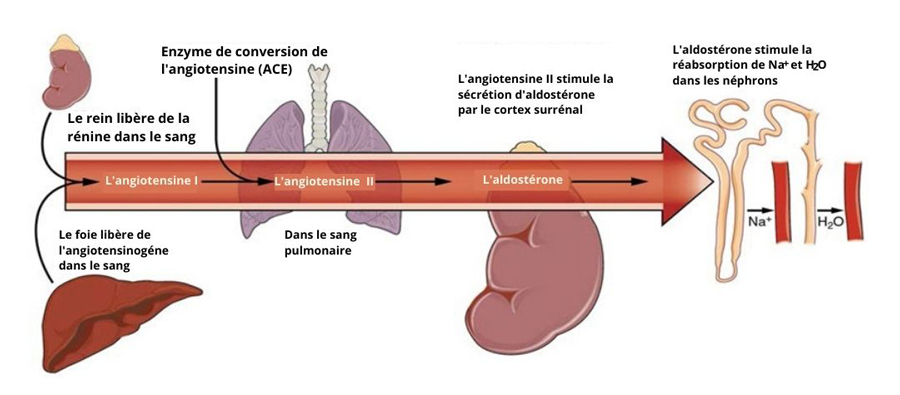
Figure : The Renin-Angiotensin System Angiotensin II stimulates
the release of aldosterone from the adrenal cortex.
Bioavailability Of Sodium
The small intestine absorbs the majority of water and the net movement occurs by osmosis and absorption is dependent on of the solute, especially sodium. Absorption of sodium takes place in intestinal lumen by the following mechanisms, which both transport sodium from the lumen into the enterocyte.
- Cotransport with glucose and amino acids,
- Na+/H+ exchange
Absorbed sodium is rapidly exported from the cell via sodium pumps. High cellular uptake of sodium will result in higher levels pumped out, which establishes a high osmolarity in the small intercellular spaces between adjacent enterocytes. Diffusion of water will be dependant on the osmotic gradient established by sodium – in this case into the intercellular space. Majority of water absorption is transcellular. Water and sodium both then diffuse into the capillary blood within the villus.
Nutritional Status Of Sodium
- Normal sodium levels are usually between 136 and 145 millimoles per liter (mmol/L).
- Blood sodium levels below 136 mmol/L indicate low blood sodium (hyponatremia).
- Blood sodium levels greater than 145 mmol/L indicate high levels of blood sodium (hypernatremia)
Dietary Reference Intake Of Sodium
The IOM has set an AI level for sodium for healthy adults between the ages of nineteen and fifty at 1,500 milligrams Table “(Dietary Reference Intakes for Sodium”). Table salt is approximately 40 percent sodium and 60 percent chloride. As a reference point, only ⅔ teaspoon of salt is needed in the diet to meet the AI for sodium. The AI takes into account the amount of sodium lost in sweat during recommended physical activity levels and additionally provides for the sufficient intake of other nutrients, such as chloride.
The Tolerable Upper Intake Level (UL) for sodium is 2,300 milligrams per day for adults. (Just over 1 teaspoon of salt contains the 2,300 milligrams of sodium recommended). The UL is considered appropriate for healthy individuals but not those with hypertension (high blood pressure). The IOM estimates that greater than 95 percent of men and 75 percent of women in America consume salt in excess of the UL. Many scientific studies demonstrate that reducing salt intake prevents hypertension, is helpful in reducing blood pressure after hypertension is diagnosed, and reduces the risk for cardiovascular disease.
The IOM recommends that people over fifty, African Americans, diabetics, and those with chronic kidney disease should consume no more than 1,500 milligrams of sodium per day. The American Heart Association (AHA) states that all Americans, not just those listed, should consume less than 1,500 milligrams of sodium per day to prevent cardiovascular disease. The AHA recommends this because millions of people have risk factors for hypertension and there is scientific evidence supporting that lower-sodium diets are preventive against hypertension.
| Age Group | Adequate Intake (mg/day) | Tolerable Upper Intake Level (mg/day) |
| Infants (0–6 months) | 120 | ND |
| Infants (6–12 months) | 370 | ND |
| Children (1–3 years) | 1,000 | 1,500 |
| Children (4-8 ans) | 1,200 | 1,900 |
| Children (9-13 ans) | 1,500 | 2,200 |
| Adolescents (14–18 years) | 1,500 | 2,300 |
| Adults (19–50 years) | 1,500 | 2,300 |
| Adults (50–70 years) | 1,300 | 2,300 |
| Adults (> 70 years) | 1,200 | 2,300 |
Institute of Medicine.
http://www.iom. edu/Reports/2004/Dietary-Reference-Intakes-Water-Potassium-Sodium-Chloride-and-Sulfate.aspx.
Updated February 11, 2004.
Accessed September 22, 2017.
Sodium Deficiency
Low sodium level is known as hyponatremia and is defined as levels below 135 mmol/L.
The cause various from having an underlying medical condition to consumption of excess water, which can cause— cause the sodium in your body to become diluted.
This results in an increase in the body’s water levels and swelling of the cells. The impact could be mild to life threatening. Symptoms of hyponatremia include nausea, vomiting, headache, confusion loss of energy, drowsiness and fatigue muscle weakness, spasms or cramps and more seriously Seizures and coma.
Treatment is dependent on the severity and the root cause. For example, treatment may be a case of reducing fluid intake if hyponatremia is mild. In severe cases of hyponatremia, intravenous electrolyte solutions and medications may be indicated.
Sweating is a homeostatic mechanism for maintaining body temperature, which influences fluid and electrolyte balance. Sweat is mostly water but also contains some electrolytes, mostly sodium and chloride.
Under normal environmental conditions (i.e., not hot, humid days) water and sodium loss through sweat is negligible, but is highly variable among individuals. It is estimated that sixty minutes of high-intensity physical activity, like playing a game of tennis, can produce approximately one liter of sweat; however the amount of sweat produced is highly dependent on environmental conditions.
In athletes hyponatremia, or a low blood-sodium level, is not so much the result of excessive sodium loss in sweat, but rather drinking too much water. The excess water dilutes the sodium concentration in blood. Illnesses causing vomiting, sweating, and diarrhea may also cause hyponatremia.
The symptoms of hyponatremia, also called water intoxication (since it is often the root cause) include nausea, muscle cramps, confusion, dizziness, and in severe cases, coma and death. The physiological events that occur in water intoxication are the following:
- Excessive sodium loss and/or water intake.
- Sodium levels fall in blood and in the fluid between cells.
- Water moves to where solutes are more concentrated (i.e. into cells).
- Cells swell.
- Symptoms, including nausea, muscle cramps, confusion, dizziness, and in severe cases, coma and death result.
Maintaining water and electrolyte balance can help prevent low blood sodium. Water is especially needed for the absorption of sodium. When exercising, hydration must be met for the activity. Often rehydration beverages are advised that contain a cocktail of electrolytes, including sodium.
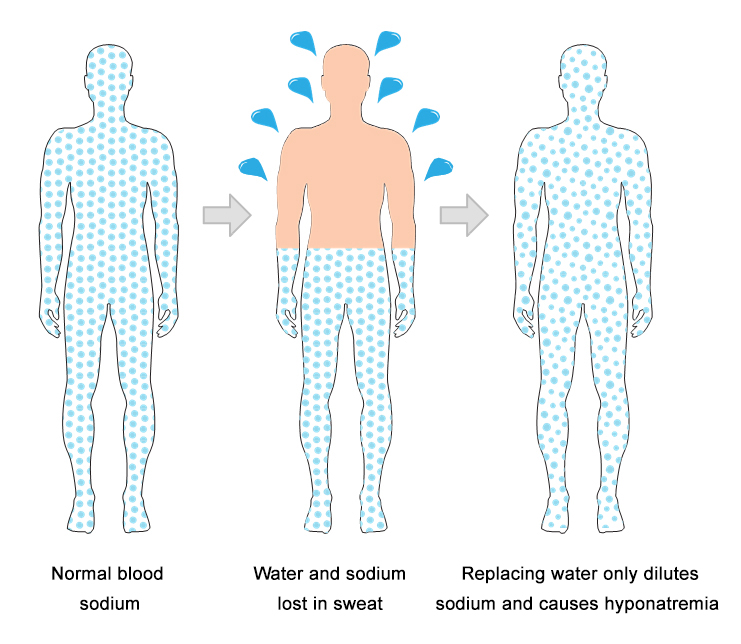
Hyponatremia in endurance athletes (such as marathon runners) can be avoided by drinking the correct amount of water, which is about 1 cup every twenty minutes during the event. Sports drinks are better at restoring fluid and blood-glucose levels than replacing electrolytes.
During an endurance event you would be better off drinking water and eating an energy bar that contains sugars, proteins, and electrolytes. The American College of Sports Medicine suggests if you are exercising for longer than one hour you eat one high carbohydrate (25–40 grams) per hour of exercise along with ample
water.1
Dietary Sources of Sodium
Most sodium in the typical American diet comes from processed and prepared foods. Manufacturers add salt to foods to improve texture and flavor, and also as a preservative. The amount of salt in similar food products varies widely.
Some foods, such as meat, poultry, and dairy foods, contain naturally-occurring sodium. For example, one cup of low-fat milk contains 107 milligrams of sodium. Naturally-occurring sodium accounts for less than 12 percent of dietary intake in a typical diet.
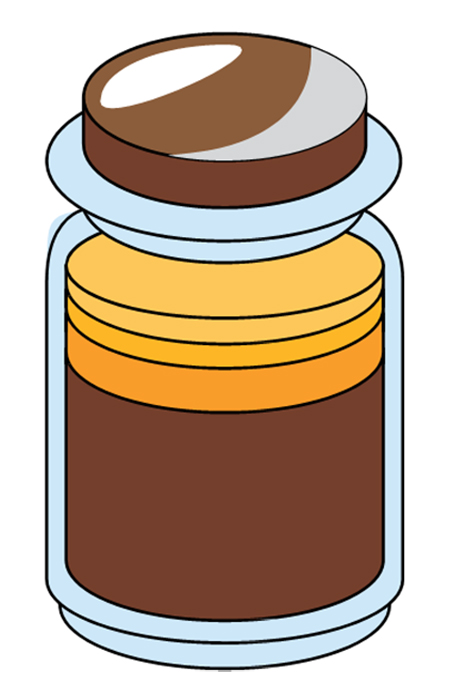
Sodium Contents of Selected Foods
| Food Group | Serving Size | Sodium (mg) |
| Breads, all types | 1 oz. | 95-210 |
| Rice Chex cereal | 1 ¼ c. | 292 |
| Raisin Bran cereal | 1 c. | 362 |
| Frozen pizza, plain, cheese | 4 oz. | 450-1200 |
| Frozen vegetables, all types | ½ c. | 2-160 |
| Salad dressing, regular fat, all types | 2 Tbsp. | 110-505 |
| Salsa | 2 Tbsp. | 150-240 |
| Soup (tomato), reconstituted | 8 oz. | 700-1260 |
| Potato chips | 1 oz. (28.4 g) | 120-180 |
| Tortilla chips | 1 oz. (28.4 g) | 105-160 |
| Pork | 3 oz. | 59 |
| Chicken | (½ poitrine) | 69 |
| Chicken fast food dinner | — | 2243 |
| Chicken noodle soup | 1 c. | 1107 |
| Dill pickle | 1 | 928 |
| Soy sauce | 1 cuillère à soupe. | 1029 |
| Canned corn | 1 c. | 384 |
| Baked beans, canned | 1 c. | 856 |
| Hot dog | 1 | 639 |
| Burger, fast-food | 1 | 990 |
| Steak | 3 oz. | 55 |
| Canned tuna | 3 oz. | 384 |
| Fresh tuna | 3 oz. | 50 |
| Dry-roasted peanuts | 1 c. | 986 |
| American cheese | 1 oz. | 406 |
| Tap water | 8 oz. | 12 |
High sodium and insufficient potassium intake are linked to high blood pressure, increasing the risk of heart disease and stroke. tHe main source of dietary sodium is salt. Most people consume salt way over the recommended amount. It is indicated that less than 5 g/day day for adults helps to reduce blood pressure and risk of cardiovascular disease, stroke and coronary heart attack.
WHO Member States have agreed to reduce the global population’s intake of salt by a relative 30% by 2025.
Reducing salt intake has been identified as one of the most cost-effective initiatives for health improvement, estimating a global prevention of 2.5 million if consumption of salt met the recommended level. The most effective way to reduce the sodium in your body is to limit foods that contain excess salt.
To decrease your sodium intake, become a salt-savvy shopper by reading the labels and ingredients lists of processed foods and choosing those lower in salt. Even better, stay away from processed foods and control the seasoning of your foods. Eating a diet with less salty foods diminishes salt cravings so you may need to try a lower sodium diet for a week or two before you will be satisfied with the less salty food.
The Nutrition Facts
The Nutrition Facts panel displays the amount of sodium (in milligrams) per serving of the food in question (Figure 3.10 “Nutrition Label” ). Food additives are often high in sodium, for example, monosodium glutamate (MSG) contains 12 percent sodium. Additionally, baking soda, baking powder, disodium phosphate, sodium alginate, and sodium nitrate or nitrite contain a significant proportion of sodium as well.
When you see a food’s Nutrition Facts label, you can check the ingredients list to identify the source of the added sodium. Various claims about the sodium content in foods must be in accordance with Food and Drug Administration (FDA) regulations (Table 3.4 “Food Packaging Claims Regarding Sodium”).
Table : Food Packaging Claims Regarding Sodium
| Claim | Meaning |
| “Light in Sodium” or “Low in Sodium” | Sodium is reduced by at least 50 percent |
| “No Salt Added” or “Unsalted” | No salt added during preparation and processing* |
| “Lightly Salted” | 50 percent less sodium than that added to similar food |
| “Sodium Free” or “Salt Free” | Contains less than 5 mg sodium per serving |
| “Very Low Salt” | Contains less than 35 mg sodium per serving |
| “Low Salt” | Contains less than 140 mg sodium per serving |
| “This is not a sodium-free food” | if food is not sodium-free *Must also declare on package |
Source :
Food Labeling Guide.US Food and Drug Administration.
Updated October 2009.
Accessed October 2, 2011.
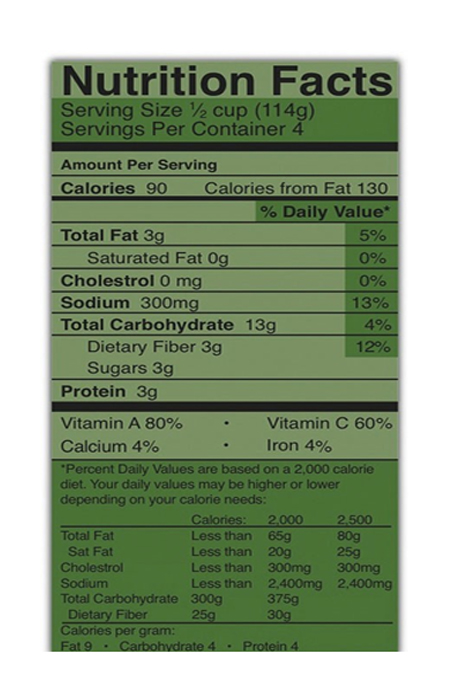
Salt Substitutes
For those with hypertension or those looking for a way to decrease salt use, using a salt substitute for food preparation is one option. However, many salt substitutes still contain sodium, just in lesser amounts than table salt. Also, remember that most salt in the diet is not from table-salt use, but from processed foods.
Salt substitutes often replace the sodium with potassium. People with kidney disorders often have problems getting rid of excess potassium in the diet and are advised to avoid salt substitutes containing potassium. People with liver disorders should also avoid salt substitutes containing potassium because their treatment is often accompanied by potassium dysregulation.
Table 3.5 “Salt Substitutes” displays the sodium and potassium amounts in some salt substitutes.
Source :
Health Facts for You: Guidelines for a Low Sodium Diet.
University of Wisconsin Hospitals and Clinics Authority.
http://www.uhs.wisc.edu/health-topics/nutrition-fitness-and-heart-health/documents/Sodium.pdf.
Updated March 2011.
Accessed September 22, 2017.
| Product | Serving Size | Sodium (mg) | Potassium (mg) |
| Salt | 1 tsp. | 2,300 | 0 |
| Mrs. Dash | 1 tsp. | 0 | 40 |
| Spike (Salt-Free) | 1 tsp. | 0 | 96 |
| Veg-It | 1 tsp. | <65 | <65 |
| Accent Low-Sodium Seasoning | 1 tsp. | 600 | 0 |
| Salt Sense | 1 tsp. | 1,560 | 0 |
| Pleasoning Mini-Mini Salt | 1 tsp. | 440 | 0 |
| Morton Lite Salt | 1 tsp. | 1,100 | 1,500 |
| Estee Salt-It | 1 tsp. | 0 | 3,520 |
| Morton Nature’s Seasons | 1 tsp. | 1,300 | 2,800 |
| Morton Salt Substitute | 1 tsp. | 0 | 2,730 |
| No Salt | 1 tsp. | 5 | 2,500 |
| Nu-Salt | 1 tsp. | 0 | 529 |
Table salt may seem an essential ingredient of good food, but there are others that provide alternative taste and zest to your foods. See Table 3.6 “Salt Alternatives” for an AHA list of alternative food seasonings.
| Seasoning | Foods |
| Allspice | Lean ground meats, stews, tomatoes, peaches, applesauce, cranberry sauce, gravies, lean meat Almond extract Puddings, fruits |
| Caraway seeds | Lean meats, stews, soups, salads, breads, cabbage, asparagus, noodles Chives Salads, sauces, soups, lean-meat dishes, vegetables |
| Cider vinegar | Salads, vegetables, sauces Cinnamon Fruits, breads, pie crusts |
| Curry powder | Lean meats (especially lamb), veal, chicken, fish, tomatoes, tomato soup, mayonnaise, |
| Dill | fish sauces, soups, tomatoes, cabbages, carrots, cauliflower, green beans, cucumbers, potatoes, salads, macaroni, lamb |
| Garlic (not garlic salt) | Lean meats, fish, soups, salads, vegetables, tomatoes, potatoes Ginger Chicken, fruits |
| Lemon juice | Lean meats, fish, poultry, salads, vegetables |
| Mace | Hot breads, apples, fruit salads, carrots, cauliflower, squash, potatoes, veal, lamb |
| Mustard (dry) | lean ground meats, lean meats, chicken, fish, salads, asparagus, broccoli, Brussels sprouts, cabbage, mayonnaise, sauces |
| Nutmeg | Fruits, pie crust, lemonade, potatoes, chicken, fish, lean meatloaf, toast, veal, pudding Onion powder Lean meats, stews, vegetables, salads, soups |
| Paprika | Lean meats, fish, soups, salads, sauces, vegetables |
| Parsley | Lean meats, fish, soups, salads, sauces, vegetables |
| Peppermint extract | Puddings, fruits |
| Pimiento | Salads, vegetables, casserole dishes |
| Rosemary | Chicken, veal, lean meatloaf, lean beef, lean pork, sauces, stuffings, potatoes, peas, lima beans |
| Sage | Lean meats, stews, biscuits, tomatoes, green beans, fish, lima beans, onions, lean pork |
| Savory | Salads, lean pork, lean ground meats, soups, green beans, squash, tomatoes, lima beans, peas |
| Thyme | Lean meats (especially veal and lean pork), sauces, soups, onions, peas, tomatoes, salads |
| Turmeric | Lean meats, fish, sauces, rice |
Source :
Shaking the Salt Habit. American Heart Association.
http://www.heart.org/HEARTORG/Conditions/ HighBloodPressure/PreventionTreatmentofHighBloodPressure/Shaking-the-Salt-Habit_UCM_303241_Article.jsp.
Updated June 6, 2012.
Accessed September 22, 2017.
Notes :
1. 1. Convertino VA, et al. American College of Sports Medicine Position Stand.
Exercise and Fluid Replacement. Medicine and Science in Sports and Exercise. 1996; 28(1) i–vii.
http://www.ncbi.nlm.nih.gov/pubmed/9303999.
Accessed September 22, 2017.
Hypernatremia
Hypernatremia and is defined as sodium concentrations >145 mmol/l. (refer to the normal blood range in your blood report, as ranges may vary). Hypernatremia can cause an increase in extracellular fluid due to water being drawn from cells for the maintenance of normal sodium concentrations outside of cells. However, the kidneys can still excrete excess sodium as long as hydration levels are met. Symptoms include nausea, vomiting, diarrhea, and abdominal cramps. Severe hypernatremia is defined as sodium levels >158 mmol/l with more harmful symptoms including mental status disorientation, lethargy, irritability, stupor, convulsions, and coma. Acute brain shrinkage can lead to intracranial and subarachnoid hemorrhage.
Hypernatremia commonly develop from excess water loss in relation to clinical issues, such as burns, respiratory infections, renal loss, osmotic diarrhea and hypothalamic disorders. A reduction in water intake with an impaired thirst mechanism could also lead to hypernatremia. Treatment involves by fluid replacement intravenously with a gradual reduction in sodium levels as reducing the level too rapidly can cause permanent brain damage.
Balancing Sodium With Potassium
Potassium has an important association with sodium in maintaining fluid balance. As you know, the regulation of sodium-potassium pump maintains intracellular fluid levels by movement of these minerals from the internal cellular environment to the external and vice versa.
Deficiencies in potassium deficiency can lead to salt sensitivity, impacting the blood pressure. Reducing sodium and increasing potassium can help manage blood pressure and henceforth hypertension and cardiovascular disease.
- Salt
- Salted snacks
- Breads
- Cheese
- Cured meats
- Fresh fish
- Chicken/turkey
- Unsalted nuts and seeds.
- Dried beans and peas – like kidney beans, pinto beans, black beans, lima beans, black-eyed peas, garbanzo beans (chickpeas), split peas, and lentils.
- Fresh vegetables, fruits
- Research not conclusive to suggest certain foods
- But electrolyte balance is needed
- Fluid balance is needed
- low salt foods
- electrolyte balance
- Fluid balance
- Avoid/reduce caffeine
Free app used in the training “Introduction aux tests sanguins pour les naturopathes québécois”

